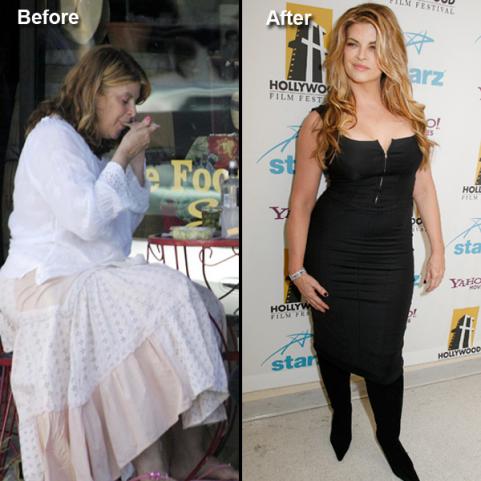High Intensity Interval Training - How to Optimize your Workout Routine and Achieve Optimal Fat Loss
Humans evolved over the millennia being physical - survival meant performing consistently varied relatively low intensity endurance activities such as gathering food, building shelter, tracking animals, and simply moving with the seasons (this was 40,000 years before agriculture appeared). This means that humans developed the physiological need for moving at a low level of exertion for several hours a day.
Occasionally, short-duration outputs of peak power during fights and sprints were required - to chase, or flee an opponent or animal. Rarely, if ever, did man spend any long periods of time with his heart rate significantly elevated as a distance runner might today - just as we can look to those genetic ancestors of ours for answers to our dietary needs (i.e. eat plants and animals; do not eat grains or dairy), today we can and should take note of our ancestors' movement patterns for the exercise component of optimal health.
The Danger of Lengthy "Cardio Sessions" and Aerobics
As a general description, physical efforts two minutes or less are considered anaerobic and those that last more than several minutes are aerobic. An aerobic "cardio" session is defined as spending long periods of time at 75% of your maximum heart rate. The danger of engaging in lengthy aerobic workouts, such as an hour running on the treadmill or 90 minutes on an exercise bike, is that it creates a stress response within the body. This can result in chronic damage to the body and less optimal fitness than is commonly believed.
"But, I love my 60 minute cardio sessions on the treadmill." Unfortunately, that kind of training (and thinking) is commonplace in today's gyms and health clubs; however, our bodies don't love those lengthy cardio sessions on our favorite piece of exercise equipment as much as we'd like to think.
Lengthy Aerobic Exercise Results In:
*increased cortisol levels (cortisol is the stress hormone)
*increased oxidative damage to your cells
*increased systemic inflammation
*depressed immune system
*muscle breakdown (called muscle wasting)
*decreased fat metabolism
Did you notice that last part about decreased fat metabolism? That's what comes as a surprise to many people - you can actually achieve optimal fat loss with short term high intensity workouts, also known as an interval training routines, than with long drawn-out cardio sessions.
What is Short Interval High Intensity Training?
Short interval high intensity training routines consist of alternating periods of high intensity work with rest in repeated timed intervals. Research conducted by Dr. Izumi Tabata from the National Institute of Fitness and Sports in Tokyo, Japan found that an interval training cycle of 20 seconds of maximum intensity exercise, followed by 10 seconds of rest, repeated without pause 8 times for a total of four minutes produced remarkable results. His research showed that high-intensity intermittent training routines produced greater aerobic and anaerobic capacity than an hour of endurance exercise.
The Value of Short Interval High Intensity (Anaerobic) Exercise:
*burns fat
*builds muscle
*builds endurance or aerobic performance (that comes as a surprise to many endurance athletes), but without the muscle breakdown
*helps improve 'strong finishes' in endurance events
How to Create a High Intensity Interval Training (HIIT) Workout:
*The high-intensity phase should be strenuous enough that you are out of breath - typically one to four minutes of exercise at 75 to 85 percent of your maximum heart rate
*Recovery periods should not last long enough for your pulse to return to its resting rate.
*Pick any type of exercise (running, swimming, recumbent bike, treadmill, elliptical machine, pushups, squats, etc).
*Warm up sufficiently to get your body prepared to perform your workout
*Select the time intervals and the number of rounds you would like to perform during your workout. (e.g. Tabata workout is 20 seconds of work, then 10 seconds of rest for 8 rounds)
*Begin your workout exerting as much effort as possible with each consecutive round of work and get a good sweat on!
How Often Should I Do A Short Interval High Intensity Training Workout?
*Short interval high intensity workouts are recommended to be done at least once per week on top of regular movement every day, weekly strength training, sprinting, and other metabolic conditioning workouts.
Are Short Interval Training Workouts for Everyone?
*Yes, anyone can do short bursts of intense exercise, although you should start slowly if you've never done it before. Also, it's very important to do a good warm-up beforehand to ensure your body is primed and ready for exercise.
*Yes, interval training is hard work, but the sessions are short and you won't be bored.
*Interval training is not the only way to exercise, but it is an excellent foundation or for any fitness routine and a wonderful way to get healthy, lose weight, gain muscle, and ... get back to your primal roots!
"You try to stay within the rules for the sake of the game, but you can always turn up the intensity." - Lawrence Taylor, ex-NFL pro football player
-
Will Cardio or Weightlifting Burn More Fat?
The common theory about weight loss is that you need to get at least 1
-
Losing Weight And Building Muscle
The general problem with doing both at t
-
Lose Weight Fast With Three Free Weight-Loss Remedies: Water, Air, And Prayer
The three most effective weight-loss remedies just happen to be fre
-
Vegetarian Diet and Nutrition - Great for Diabetes
Nutrition is all about what a person with diabetes eats. Nutrition
-
Why Choose Health Food Quick Weight Loss Diets
With well being food quick weight loss diets, you’ll be able to
-
Dr. Oz Weight Loss Guest Expert Joel Fuhrman About Weight Watchers
A recent episode of The Dr. Oz Show featured weight loss guest expert
- DON'T MISS
- Oral HCG Drops For Obesity Treatment Can Help
- The Risk Of Having Too Much Belly Fat
- Eat Fat To Burn Fat
- A Real Look at the Diet Solution Program
- Diet for Your Body Type
- Sexy Without Going On A Diet
- Good Exercises to Lose Belly Fat
- Be Miss Body Beautiful with HCG Recipes
- Vegetarianism to Lose Weight
- Importance of Resistance Training For Women




